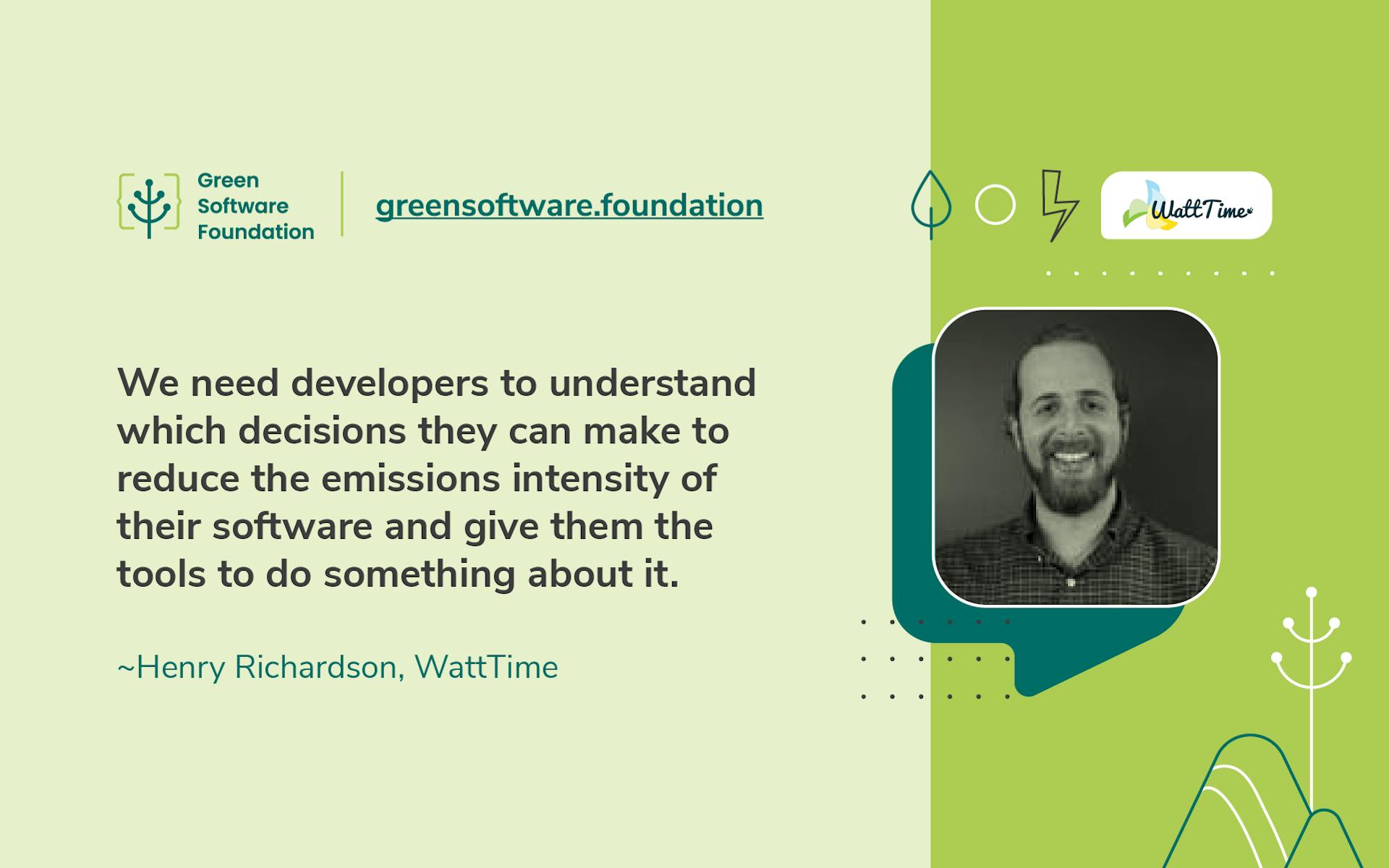First, tell us about WattTime and the association with the Green Software Foundation (GSF).
WattTime is an environmental tech nonprofit that offers technology solutions that make it easy for anyone to achieve emissions reductions without compromising cost, comfort, and function. We develop data-driven tools and policies that increase environmental and social good, including Automated Emissions Reduction (AER) and emissionality. WattTime is also the convening member and cofounder of the global Climate TRACE coalition, which is collecting and sharing global greenhouse gas emissions data with unprecedented detail, speed, and transparency.
Tell us about your career path, your interest in green software and your journey to GSF.
I was trained as an architect and always had a strong interest in sustainable construction. I helped design green buildings for many years, looking for ways to reduce their carbon impact. But I eventually realised I was focusing on the wrong culprit, and that the makeup of the electric grid was really what was driving much of the carbon emissions produced by buildings.
Working at WattTime, I’m now supporting real change for the grid. We’re focused on giving tools to individuals, corporations, governments, and everyone in between to make a difference on climate.
WattTime is very enthusiastic about participating in the GSF because it opens up new avenues to provide a new group of people—software developers—with the tools they need to achieve energy choice and actively reduce emissions. I am personally excited to help the GSF approach the problem of emissions from software from a grid-oriented standpoint to complement the software focus many other participants bring to the table.
What does WattTime expect to achieve by working with the GSF and in green software in general?
Through our work with the Green Software Foundation, our goal is to drive emissions reductions in yet another important sector that touches so many aspects of our lives—software. We believe people and companies should be empowered with the data they need to make the best decisions for the planet, and by supporting the development of the SCI specification, we’re equipping developers with critical tools to do just that.
The Green Software Foundation has identified three key insights about software that WattTime is eager to support:
Carbon-aware software: Software can be intelligently scheduled by location and time to reduce emissions associated with keeping it running.
Hardware efficiency: It is possible to use less hardware to achieve the service goal of the software, and requiring less hardware means fewer emissions because less hardware needs to be produced to operate these tools.
Energy efficiency: There is an opportunity to use more efficient hardware that uses less energy to operate—another clear way to reduce associated emissions.
In our work with the GSF, WattTime is primarily focused on making software smarter by changing the time and location of its operation to optimise for emissions reductions. In addition, we hope to help identify new opportunities for software to reduce global emissions, create tools to help developers have a more positive climate impact, and make the emissions impact of software a key consideration in the development process.
The GSF has taken a strong position on these efforts by creating the SCI specification and associated tools. This new forum creates a solid foundation to usher in the change we hope to see.
What obstacles do you see to popularising green software? How do you think we can overcome them?
A general lack of awareness around the emissions impacts linked to software is definitely a problem at this stage. Making that connection clear to developers through GSF’s work is an important step to correct that. We need developers to understand which decisions they can make to reduce the emissions intensity of their software and give them the tools to do something about it.
Another obstacle we, at WattTime, see is related to the current carbon accounting standards. These standards, including the Greenhouse Gas Protocol, are not well designed for measuring the emissions impact of software. The GHG Protocol is focused on emissions created by individual organisations, but software development and use often cuts across multiple companies. For example, one company may write the software for another company, which then runs on the hardware of a third company.
Developers need to look beyond their organisations alone to become more aware of the many global impacts their software may have. The new SCI specification makes this so much easier than it has been before.
Any other matters you would like to share with us?
WattTime is always looking for creative ways to give people more choice in the energy they use. Historically, WattTime has focused on Automated Emissions Reduction (AER) technology, which makes devices “smarter” and allows users to opt for clean energy without a second thought.
We’re also working to leverage the concept of “emissionality,” helping corporations and others choose renewable energy investments in locations that will allow for greater emissions avoidance.
Our work with the GSF is allowing us to expand to other means of reducing global emissions. And as we expand our work, we’re also expanding our team. If this work sounds as intriguing as it did for me, WattTime is currently hiring for several software engineers positions. I encourage anyone who wants to support climate action and global decarbonization goals to take a look at the open roles here.
This article is licenced under Creative Commons (CC BY 4.0)

